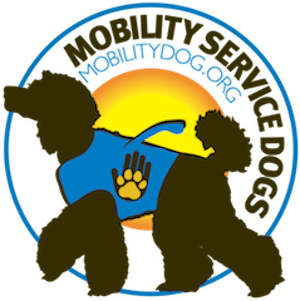Did We Domesticate Dogs or Did They Domesticate Us?
Gray Wolf Laying Outside Den
Picture the scene: a Paleolithic hunter-gatherer out looking for food comes across a wolf den with cute pups. Mom and dad are away from the den, so the forager grabs the pups, brings them back to camp and raises them to be as tame as dogs. They multiply over the generations and voila, Canis lupus familiaris, the canine pets we know and love.
Sweet Story, But it Didn’t Happen that Way
Wild Wolves Surrounding Prehistoric Man
Here’s a more likely scenario: the humans in that Paleolithic camp notice that some of the bolder wolves (usually competitors for food in a decidedly unfriendly rivalry) hang around the fringes of the camp, scavenging an easy meal from the discarded scraps. Humans probably kill those that are bold and aggressive but tolerate the bold, but friendly wolves.
Over time, the more fearless and social animals draw ever closer to the people, who not only share their food, but also begin to get access to some of the meat the wolves obtain. Think of it not as survival of the fittest, but rather survival of the friendliest, as the affiliative animals outcompete those who avoid human contact. Human-wolf interaction increases, and wolves eventually become hunting partners rather than foes.
Friendliness eventually remakes the wolves’ morphology as well as their psychology. Domestication gives them shortened snouts, floppy ears, splotchy coats and wagging tails. Scientists call this the “domestication syndrome.” Experiments with foxes in Siberia showed that, over generations, among tame foxes, levels of glucocorticoid (a stress hormone) had fallen to less than half that of wild foxes. Their adrenal glands had also become smaller and their serotonin levels had increased, yielding less aggressive, friendlier animals. Like dogs, they also became capable of following the human gaze and responding to gestures.
Mutual Benefit
Three White Wolves with One Wolf Howling
Wolves’ propensity to bond with humans and provide benefits to them yielded a dual evolutionary track. Just as friendlier wolves would have had a survival advantage, so people who learned to use these proto-dogs as hunting aids would conceivably have had an advantage over dog-less hunters. Even today, moose hunters in the arctic bag 56 percent more prey when accompanied by dogs. Just talk to any modern pheasant or duck hunter about how important dogs are to the success of their endeavors.
Dogs are also a living alarm system, sounding a warning when intruders appear (as many of our pooches still do when the FedEx guy approaches). When visitors are more likely to have weapons than parcels, an early alert may be crucial to survival. A loyal wolf-dog could also have helped defend the camp, another survival advantage. Also, as unpleasant as it is to contemplate, dogs can serve as an emergency food supply.
Perhaps, as humans realized the advantages of dog domestication, they came to see that the raising of other animals and even cultivating plants could provide a more stable, settled life.
Are Coyotes Next?
In recent years, populations of coyotes have expanded broadly. They have become regular inhabitants of urban and suburban areas, having developed a high tolerance for proximity to human activity. Consequently, they are able to exploit these resource-rich habitats, much as their ancient wolf cousins did.
Young Coyote Laying in the Field
Coyotes are fundamentally a western species, though their populations have spread to the Northeast. Today, the eastern coyote (one of 19 subspecies) inhabits the entire eastern seaboard, extending as far west as Ohio. Observers notice that the eastern version is larger than the western coyote, possibly because of cross-breeding with domestic dogs and wild wolves.
So far, humans and coyotes remain suspicious of each other. We still kill coyotes (and not just with our cars) and they still occasionally prey on small pets (though perhaps not as commonly as we fear). But could the process that defined the wolf-human co-evolution happen with people and coyotes?
Coyotes certainly benefit from access to discarded human food, and some people (against the advice of wild animal experts) feed their neighborhood coyotes. Could bold but social animals begin to affiliate more closely with humans? Could cross-breeding with dogs produce pups that we take into our households (which no doubt happens already in some situations)?
So far, we remain wary of - and usually antagonistic to - this increasingly common canid, but who knows. The story of wolves and humans tells us evolutionary history could repeat itself.




